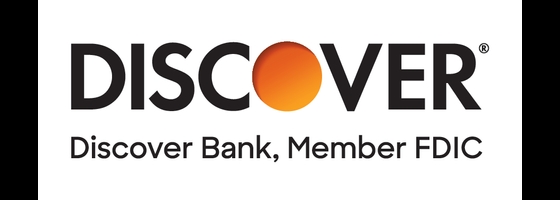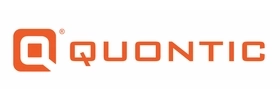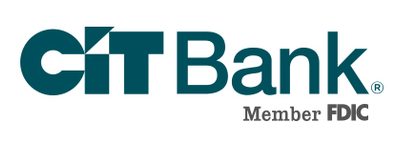Types of Bank Accounts: Checking, Savings, CD & MMA

Our evaluations and opinions are not influenced by our advertising relationships, but we may earn a commission from our partners’ links. This content is created by TIME Stamped, under TIME’s direction and produced in accordance with TIME’s editorial guidelines and overseen by TIME’s editorial staff. Learn more about it.
Most Americans have at least one active bank account. According to a recent survey from the Federal Reserve Bank, more than 80% of U.S. adults are “fully banked,” and most don’t regularly use alternative sources of personal funding, such as payday loans or money orders.
Bank accounts are very beneficial, and there are several different types of accounts. If you’re looking to open a bank account—whether for the very first time or a different account from what you currently have—it’s important to understand your options.
Bank accounts are used to store personal funds and are insured by the Federal Deposit Insurance Corporation (FDIC) or National Credit Union Administration (NCUA). If the bank or credit union goes out of business, your money is protected up to $250,000.
If you’re unsure of the differences between a checking and a savings account, or how a money market account works, read on to learn more. Here’s what you need to know about the most common types of bank accounts.
Checking accounts are primarily used for spending purposes. For example, you might use a checking account when you set up automatic bill payments or write personal checks. If you have a debit card, the money typically gets withdrawn from a checking account every time you make a purchase.
Unlike some other types of bank accounts, most checking accounts accrue very little interest. Some checking accounts have no interest at all. Another thing to know about checking accounts is that there is sometimes a monthly maintenance fee which you must pay to keep the account open.
Numerous banks have begun offering high-interest checking accounts as a means for consumers to maximize their earnings while simultaneously enjoying the convenience and functionality that comes with a checking account. One good example is Quontic High Interest Checking which benefits consumers with a 1.10% interest rate and doesn’t charge any monthly fees on overdraft protection, NSF, money order and several other bank services.*
In today's rapidly evolving banking landscape, financial institutions have recognized the importance of catering to diverse customer needs. Beyond the traditional checking accounts, they now offer specialized account options tailored to specific audiences.
This increased personalization ensures that individuals, families, and businesses alike can find the perfect checking account to align with their financial goals and lifestyles, making banking a more inclusive and accessible experience for all.
As the name suggests, savings accounts are typically used to store money that you don’t need to access or spend right away. The biggest benefit to a savings account, especially with high interest savings accounts, is that you can earn interest and grow your money without doing anything. The interest rate is called the annual percentage yield (APY), and it varies based on market conditions.
Before you open a savings account, it’s a good idea to check what fees you will have to pay. Some savings accounts charge a monthly maintenance fee or a withdrawal fee, but it depends on the specific account and the bank or credit union you use. Member FDIC.
A money market account (MMA) is another form of savings account. Compared to a regular savings account, MMAs usually have higher interest rates, which means your money has more opportunity for growth. You can also get personal checks and debit cards, which makes it easy to spend money from your MMA in a pinch.
However, MMAs have some restrictions that traditional savings accounts don’t. For example, MMAs usually limit the number of withdrawals you can make each month. There might also be higher balance requirements or minimum deposit amounts than a regular savings account.
A certificate of deposit (CD) is a savings account that provides guaranteed returns over a fixed period of time, usually between three months and five years. During that time, your funds are locked away, and you can’t access the money until the maturity date.
The main benefit of CDs is that CD interest rates are generally much higher than a traditional savings account or MMA. And, once you open the account, the interest rate is fixed. There’s no risk of the interest rate going down based on market fluctuations.
CDs can be an effective way to grow your savings over the short-term, but it’s important to understand the drawbacks. Most notably, you can’t access the money until the maturity date. If you need to tap into your savings, you will pay an early withdrawal fee. This means that by investing in this CD account, your money can grow faster than it would in a regular savings or MMA. However, withdrawing funds before the maturity date may result in penalties, making CDs less flexible compared to MMAs.
Choosing the right bank account starts by assessing your personal financial needs and goals.
If you’re looking for an easy way to spend money, having a checking account is beneficial. You can use a debit card to spend money from the account or write checks. Even if you rely on a credit card for most of your spending, you might want to have a checking account to pay off your card balance at the end of the month.
For most people, some type of savings account is also beneficial, even if you aren’t actively saving for anything. It’s a good idea to keep some money in a savings account in case of an emergency, such as an unexpected medical bill or a car repair.
If you’re looking for a way to grow your savings without much effort, an MMA or CD might be right for you. These accounts have a higher growth potential than traditional savings accounts, but they have some restrictions.
Before you open a bank account, it’s worth comparing a few different accounts to see which one works best for your current financial needs. You can use the tool below to get some of the best offers offered today.
The process of opening a bank account usually only takes a few minutes, whether you do it online or at a local bank or credit union branch. However, it’s important to be prepared with the right information. Here is some of the information you will need to provide when you open a bank account:
As part of the application process, you might also be required to make a minimum deposit. You will need to supply this deposit using existing funds. Most banks allow you to write a check or transfer money from another account to fulfill the minimum deposit requirement.
*Ten debit card point-of-sale transactions of $10 or more per statement cycle required to earn the maximum APY per account balance tier. If the qualifying activity requirement is NOT fulfilled, the interest rate paid on the entire balance will be 0.10% APY.
The information presented here is created by TIME Stamped and overseen by TIME editorial staff. To learn more, see our About Us page.






